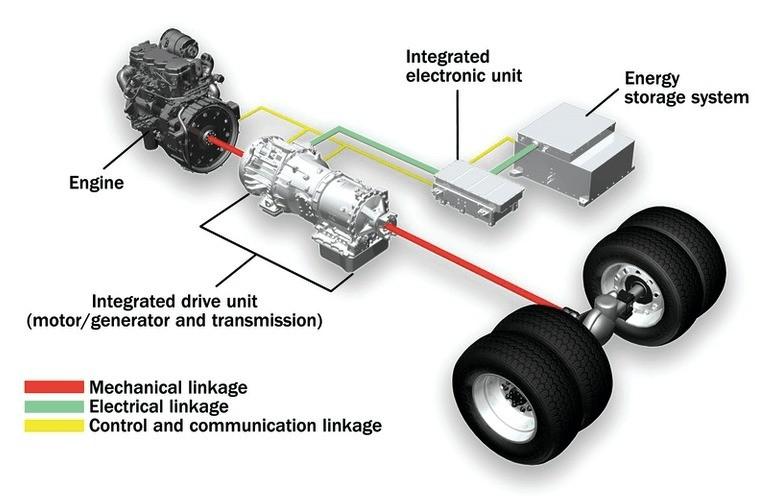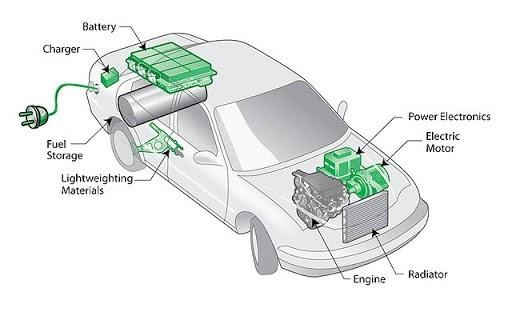


How are we?
We are in the business of Manufacturing, Research and development (R&D) & trading of EV batteries & Solar batteries, EV kits, Stepper Motors & Step Servo Motors, 3D Printers, Automation parts, IOT, Drone items incl. DIY kits & ready to fly drones.
We believe in 360 Deg approach for our clients to provide hassle free platform for all our services and products.
Our client includes but not limited to IIT- Madars, IIT Kanpur, GNFC, ISRO,DRDO, various Govt. organizations, etc.

content
Types of electric vehicles
EV Hybrid Vehicle
Regenerative Controller
Li ion Battery pack mfg process

Types of electric vehicles
Battery Operated Electric Vehicle (BEV or EV)
Hybrid Electric Vehicle (HEV)
Plug-in Hybrid Electric Vehicle (PHEV)
Range Extension Electric Vehicles (REx)
Fuel Cell Electric Vehicles (FCEVs)

Battery Operated Electric Vehicle (BEV or EV)
As the name suggests these vehicles are fully operated through power generated from a battery (Li-ion).
This type of vehicle does not come with the traditional combustion engine and thus emits zero carbon monoxide or pollutants in the atmosphere.
Examples of BEVs: Tesla Model 3, BMW i3, Hyundai ioniq, Ford Focus, etc.


Hybrid Electric Vehicle (HEV)
This vehicle features both the conventional combustion engine & battery-powered electric motor. But the battery cannot be charged by plugging in through an electricity input/ charging station, instead, it captures energy while braking and batteries are charged.
Examples of HEVs: Volvo XC90, Toyota Prius


Plug-in Hybrid Electric Vehicle (PHEV)
type of EV category from its name. Unlike hybrid vehicles, PHEVs battery can be charged through a plug-in socket as well as power generated through braking and the car operates on the both combustion engine and electric powered motor. Benefits of PHEVs are the ability to cover shorter distances without using the combustion engine and increased range from fuel, battery charging & regenerative braking.
Examples of PHEVs:
BMW i8, Toyota Prius
Prime


Range Extension Types of Electric Vehicles (REx)
This type of vehicle features both combustion engine & electric motor but most of the driving is done by the electric motor only. The internal combustion engine is only there to charge the battery if in case it gets low during a journey.
Example of REx: BMW i3


Fuel Cell Electric Vehicles (FCEVs)
This type of vehicle stores hydrogen gas in the tank & use electric motors like BEV. A fuel cell combines hydrogen with oxygen present in the air & generates electricity which powers the electric motor.
Like the BEVs, it does not contain tailpipe and the byproduct is only water. There is no need to plug-in as the fuel cells are recharged by refilling the hydrogen.
Hydrogen infrastructure is far from reality as of now, which is not the case with Charging infrastructure as it has gained worldwide momentum.


What is a EV Hybrid Vehicle
Hybrid electric vehicles are powered by an internal gasoline-powered motor and one or more electric motors to power it.
Hybrid cars are designed to switch between using gasoline and electric power or using both at the same time, depending on what’s most efficient at the moment.
Hybrids come in different types, including those that can be plugged in to charge their batteries and others that just recharge by running the engine or through braking It’s called Regenerative.

Which
car
is better, EV or hybrid?
If one has a spare gas powered car than going for an EV is a good idea as once you the hit highway for a long drive the range anxiety will kick in. If one can have only one car than as far as today is concerned getting a hybrid makes more sense.

what is full and half hybrid
Half hybrids have an electric motor that assists the gas engine, but always needs the gas engine running for it to assist.
Full” hybrids have an electric motor that can move the car without the gas engine running, though only with electricity that originally comes from the gas engine



parallel hybrid vehicle Series hybrid vehicle





